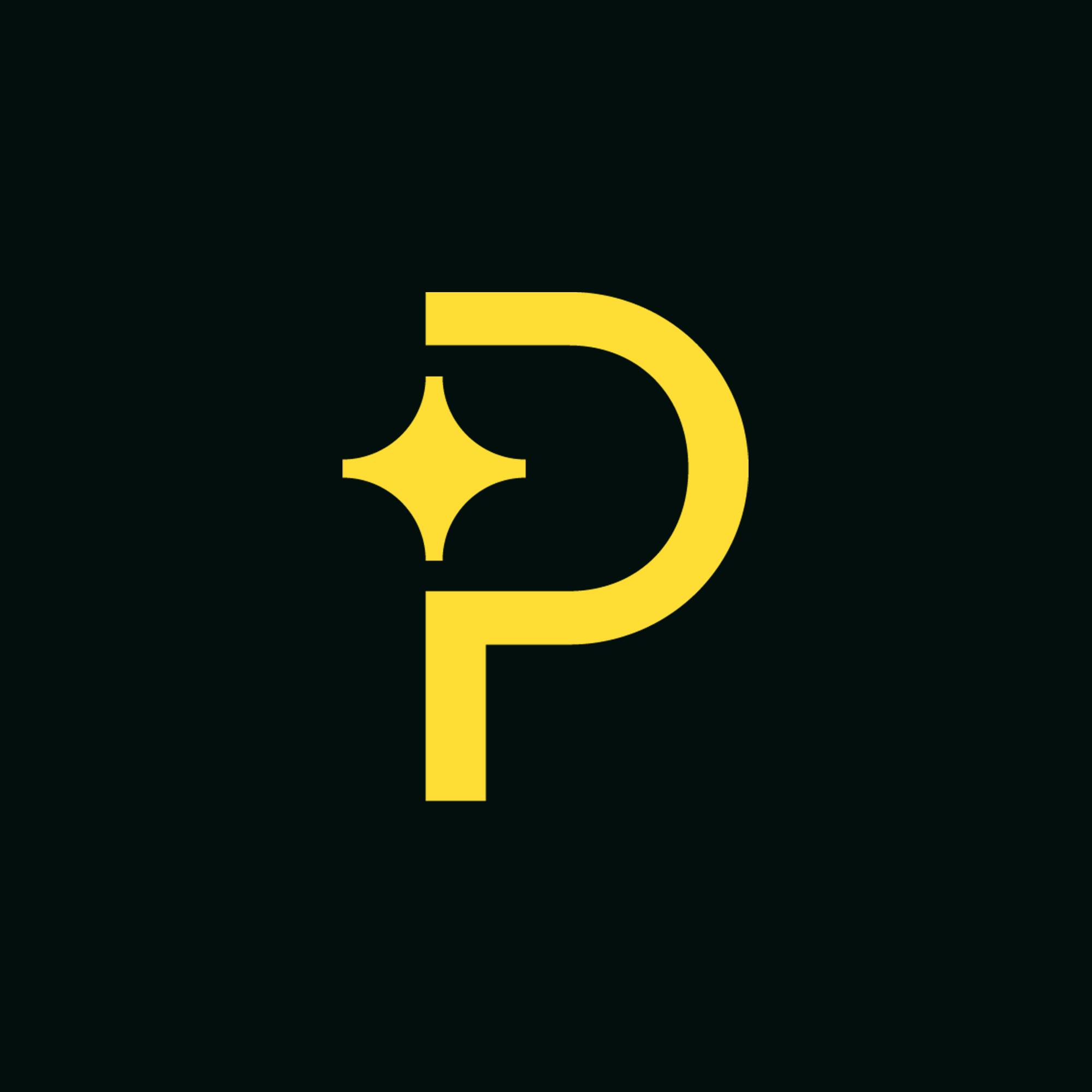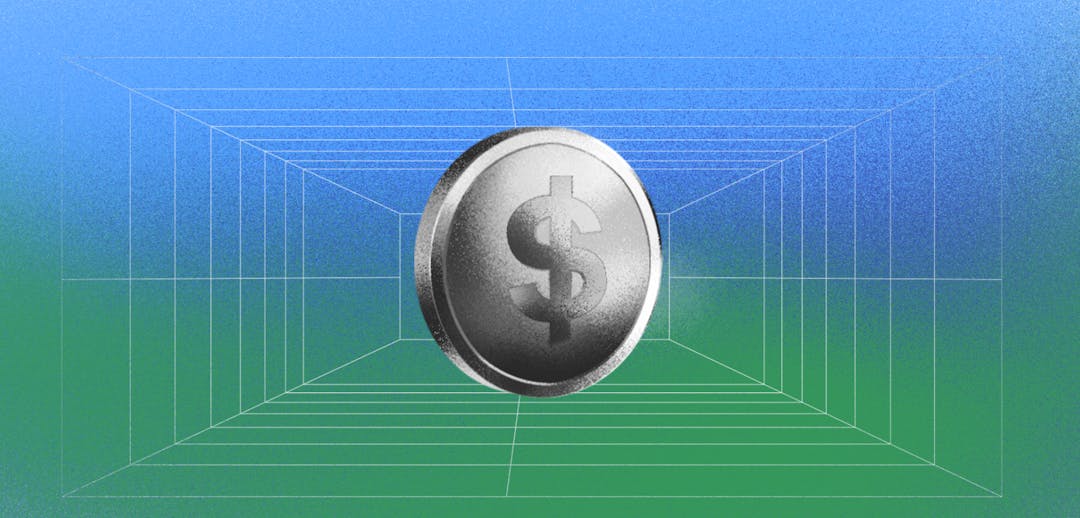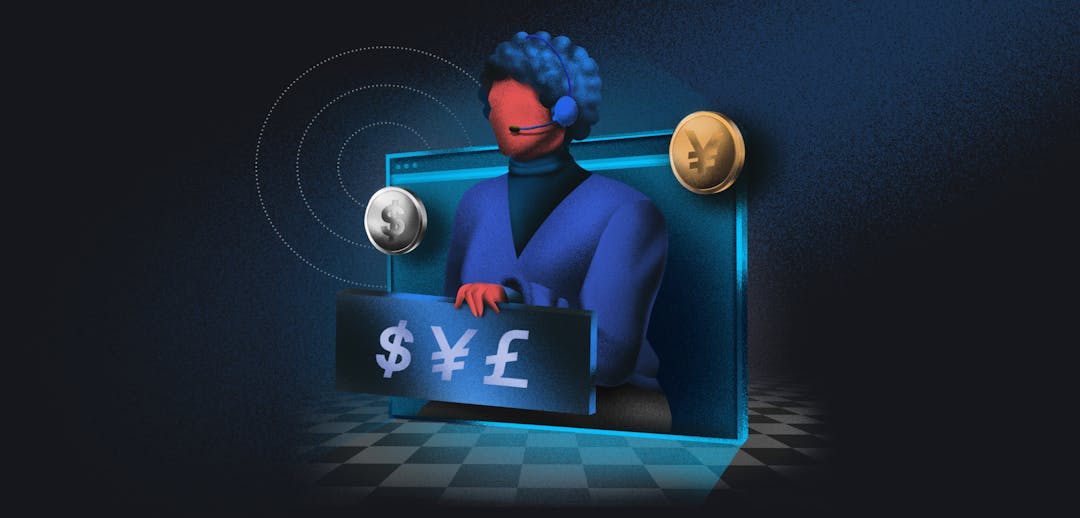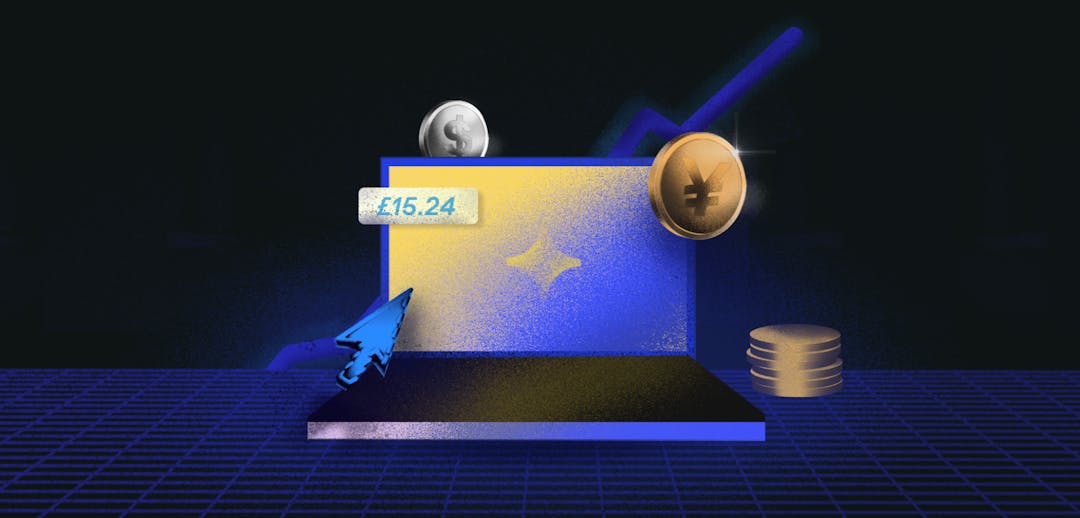Learn all about tiered pricing strategy, why it's popular in SaaS, and how it could benefit your business.
For many SaaS products, one size doesn't fit all, and forcing customers into a one-size-fits-all solution can leave many of them choosing to opt out instead. Rather than lowering conversion rates, or increasing churn rates, with a pricing strategy that doesn't fit customers’ needs, such companies should consider a tiered pricing strategy.
What is tiered pricing?
Tiered pricing is a pricing strategy that scales the price of a product according different thresholds of a certain metric. For example, a B2B SaaS company may have an entry-level tier that allows one employee to access the system and a higher-end tier that lets unlimited employees use it. In between there will be plans offering in-between ranges. Tiered pricing is used by businesses to deliver quantity discounts to customers who spend more. Here's a simple example:
1 seat: free
Seats 2-10: $150 per license
Seats 11-20: $100 per license
Seats over 20: $50 per license
In this example, you have four tiers. The first is a freemium offering. The second sees you pay $150 for two seats (as the first is free) and up to $1,200 for ten. If you needed 15 seats, you'd land in tier three, giving you a discounted rate on those five seats that fall into the third tier: $1,200 + (5*$100) = $1,700.
By tiering the price based on the number of users, businesses can offer plans that fits their customer needs best and get the most value for their dollar, while also monetizing their products and services effectively.
4 benefits of tiered pricing for SaaS
We've discussed what the goal of the tiered pricing model is. Now let's take a look at some of the ways the strategy helps to achieve that goal, including some ways that it goes above and beyond simply bringing in new customers.
Expand your customer base
When you only have one tier, customers who don't need everything in that tier will be overpaying, sometimes drastically. This means that many of those customers will choose not to purchase the product at all. Rather than having a customer paying a little less than may eventually pay more, you have no customer at all.
Enables upsell to the next tier
Upselling is a big part of successful SaaS operations. When you have a customer that has very limited needs, and you provide them with a tier that fits those needs, you've got them in your ecosystem. As the needs of that customer grow, it becomes easy to sell them on a higher-priced tier. If they went elsewhere because your prices did not fit their needs at the time, you've simply lost out on that money.
Maximizes revenue potential
With a well-designed tiered pricing structure, there's a plan that fits everyone's budget and needs. Customers won't be leaving your website and looking to competitors because they can't get what they need from you. Instead, they'll sign up for whatever tier fits them best and then change tiers as their needs change. They may move up or down a tier, but regardless of which direction they go, their money is staying with you.
Increases the value of new features
When you have a single tier of pricing, any new feature does little to increase your revenue. Features that set you apart may bring in new customers, but only if they need the feature at the current time. Putting features into an appropriate tier will make that tier more attractive as an upsell, while retaining the ability to draw in users who don't want to pay for that feature.
3 tiered pricing strategies to consider
Let's take a quick look at three of the commonly used strategies for setting up pricing tiers.
Feature tiers
Tiers based on features rely on the fact that not everyone needs advanced features. By breaking your tiers up with the most basic features in cheaper plans, and more advanced ones in higher-priced plans, you can capture the needs of every one of your customers.
Usage tiers
This is a common tier strategy for services like cloud computing or mailing list providers. The amount of time spent utilizing a computer resource or the number of recipients in a mailing list determines the cost to the customers.
User count tiers
This is usually for B2B applications, where it isn't uncommon for many different users to need access to the product. By splitting the tiers up according to the number of users given access, you can cater to both small businesses that are just starting out and large enterprises.
Best tiered pricing examples in SaaS
Let's now move away from generic descriptions of the different types of tiers commonly used by SaaS companies and look at some concrete examples. Below are several popular SaaS businesses along with a description of their pricing tiers.
1. Zendesk's feature tiers
Zendesk splits their tiers in two different ways. The tiers mentioned on the page are broken down by feature. Each of those plans is priced per agent. So Zendesk is utilizing both the feature-based strategy and the user-count strategy. As we go through the other examples, you'll see it's fairly common to mix tiers like that.
2. ConvertKit's usage-based tiers
If you go to ConvertKit's pricing page, you'll find that they also split their service tiers in two different ways. When you first visit the page, you're presented with three options split by feature. However, you'll notice that those tiers are for a specific number of subscribers. Adding support for more subscribers increases the cost of the two paid tiers.
3. FYI Workspaces' user count tiers
FYI does something similar to Zendesk with their pricing. Again, you'll notice that there are three tiers of pricing based on the features provided; however, each of those tiers is priced per user. This allows businesses to pay only for the exact number of employees who will be using the service. Such pricing maximizes the revenue from all types of businesses.
4. CartHook's hybrid tier pricing
Now let's look at CartHook's pricing page. As you'll see, their pricing offers include two tiers that users can choose from: one for companies in the growth stage and one for enterprises. However, they've taken a different approach to combining the types of tiers than the other companies on the list have. CartHook has a flat monthly fee for each of their tiers, but on top of that, there's an additional fee based on the revenue they recover for you.
How to implement a tiered pricing strategy
Implementing a tiered pricing strategy requires a great deal of research to get the right values. Our service with Price Intelligently will do extensive research on the market you serve to determine exactly which features customers in your industry value and how much they are willing to pay for them. The general steps are laid out below.
Know thy customer base
Finding the perfect price for your customer base requires you to know who that customer base is. You can't get away with charging premium pricing to a customer base that's looking for bargain-basement deals. Therefore, understanding the average income and the motivations of your average customer is an important first step.
Understand the perceived value of your product
This goes back to what we said earlier. Getting the right pricing is all about understanding what your customers think your product is worth. If you charge less than they think it's worth, you'll leave money on the table. If you charge more than the perceived value, nobody will purchase. Tiered pricing makes this process more difficult as you must break your product down into logical segments and analyze them each individually.
Communicate pricing tiers clearly
Many of us have come across a pricing page that was too confusing. Breaking things down into tiers is a great way to let customers customize the amount that they'll be paying, and what they'll get in return. But if you provide too much customization and too little explanation of how things work, things can get confusing quickly.
Implement localized pricing to expand potential customer reach
This isn't specific to tiered pricing, but rather a good strategy in general. Different areas of the world have different levels of disposable income. Furthermore, different cultures value some features more than others. Tailoring your pricing to each locality in which you do business helps amplify the profit-maximizing effects of tiered pricing.
Comparing the tiered model to other pricing strategies
Let's take a look at tiered pricing and how it measures up against other common strategies like flat rate pricing, freemium models, and volume-based pricing.
- Flat Rate Pricing: With flat rate pricing, a single fixed price is charged for a product or service, regardless of usage or consumption. This model is straightforward and easy for customers to understand. It works well for products where the cost to deliver is consistent and predictable.
Example: Netflix offer a subscription model where customers pay a fixed fee each month to access a library of movies, TV shows, and documentaries. With flat rate pricing, subscribers can watch as much content as they want without worrying about extra charges based on the number of shows they watch or the hours they spend streaming. - Freemium Models: In a freemium model, the basic features of a product or service are offered for free, while advanced features or content require payment. This approach can attract a large user base by lowering the barrier to entry, with the hope of converting free users into paying customers for premium offerings.
Example: A great example of the freemium pricing model is Spotify. Spotify offers a free version of its platform that allows users to listen to music with ads. This gives users a taste of the massive library of songs and playlists they can access, and the goal is to entice them to upgrade to the premium version. - Volume-Based Pricing: A type of usage-based pricing, this involves charging different prices based on the quantity purchased. The more a customer buys, the lower the price per unit. Volume-based pricing encourages larger purchases and can be appealing to customers looking for discounts on bulk orders.
Example: Slack is a popular collaboration hub that allows teams to communicate, offers volume-based pricing plans that decrease the cost per user as the number of users increases
Tiered pricing FAQs
Who uses tiered pricing?
Retailers and DTC brands use tiered pricing to create different price levels and appeal to a wider customer range. The goal is to create product offers to attract lower and higher-end customers.
How does tiered pricing work?
Business owners who use the tiered pricing model create different price ranges to categorize their products or services. This allows customers to choose a tier that best matches their needs and pay only for the product features, services, or quantity they use.
How to create pricing tiers?
Creating pricing tiers that will attract new customers and minimize churn can be challenging. Below are the key steps you should take, but remember to continue to analyze and modify your pricing structure if the current one doesn’t produce satisfactory results:
- Define target market and personas
- Determine features and services that customers are willing to pay for
- Define the number of pricing tiers
- Create separate marketing plans for different tiers
What's the difference between tiered pricing and volume pricing?
There is often some confusion between tiered pricing and volume pricing because they are both based on a quantity discount. The subtle difference is all down to the unit thresholds, which makes a difference in the customer's total discount.
With tiered pricing, the product or service is priced for the range (or segment) in which it's included. The way the discount works within a tiered pricing strategy is that the price per unit decreases once each quantity within a tier has been sold.
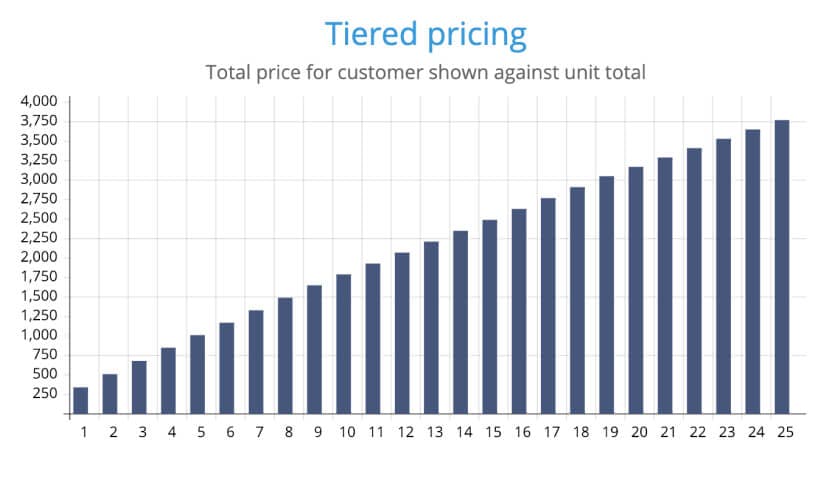
With volume pricing, the amount of discount is still determined by the number of units purchased by the customer. However, the discount is applied to all units. The greater the demand for your product or service, the greater the discount on every unit within the set price ranges.
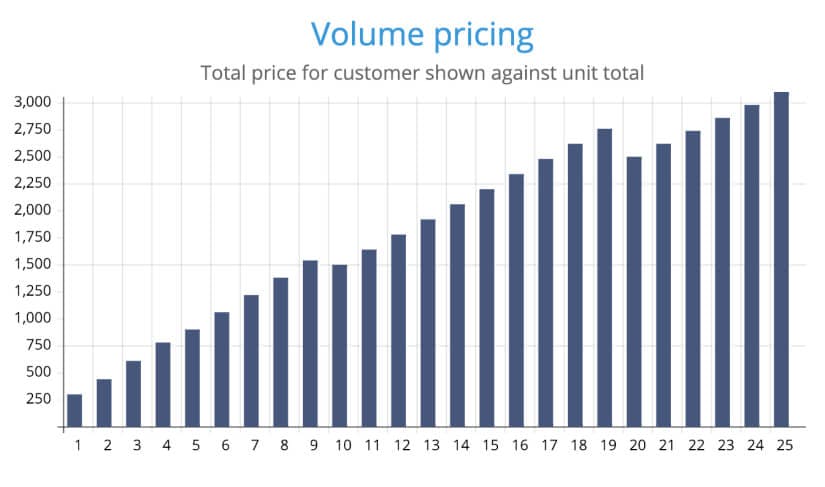
What's the difference between a tiered pricing model and a tiered pricing strategy
A tiered pricing strategy differs from the definition of a tiered pricing model. Tiered pricing as a model refers to selling products within a specific price range. Tiered pricing as a strategy is all about tailoring your pricing to best meet your customers’ needs.
The standard approach for SaaS companies is to have three tiers with different price points. Something like: Basic, Standard, Premium plan. That’s not to say you can’t have more than three different tiers. Still, it is important not to overwhelm potential customers with a million different pricing options — keep it as simple as possible.
Take your time when it comes to figuring out the value and cost of each tier too. It all comes down to what your software allows for, and the value or metric you want to price by. For example, you may base each tier on quantity, usage, feature allowances, or even differentiate how your target audience best relates to your product.
